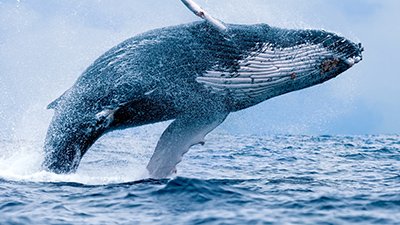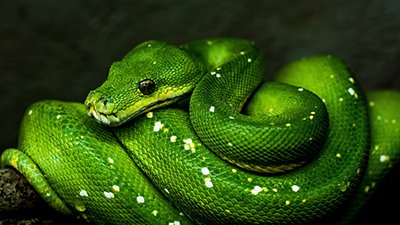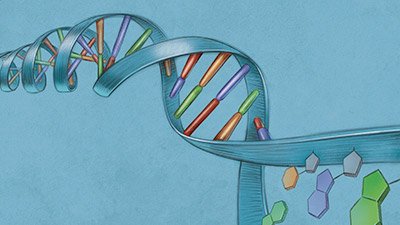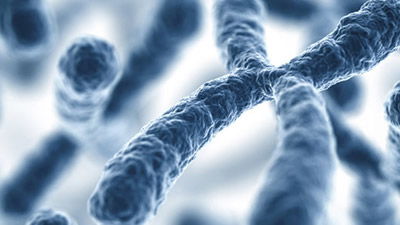Animal Genetics
Genetics and Evolution
Understanding the underlying genetic mechanisms behind human and animal characteristics is crucial. Evolutionists claim that what amounts to genetic accidents can create new information. Creationists point out that the genetic accidents we observe frequently lead to the disappearance of useful function or merely a “rescrambling” of traits.
Fins to Fingers?
While many evolutionists have assumed that fin rays and fingers were homologous, ancestrally related structures, the evidence is notably lacking. Not finding any clues in the fossil record, evolutionary geneticists hope to fill this gap in the path from fins to fingers.
Wolves and Dogs
Scientists have mapped the genomes of several dog breeds and wolves, and now they are comparing them to see which set seems closest to the original wolflike ancestor. Ultimately, all dogs descended from a single set of parents on Noah’s Ark. As these first wolflike animals filled the earth, groups of them migrated in different directions.
News About Animal Genetics
-
May 13, 2019 from Ken Ham Blog
The headline for a new study summarized by National Geographic declared, “Speedy horses evolved only recently, says landmark equine study.”
Articles About Animal Genetics
-
March 12, 2021 from Answers in Depth
In recent years evolutionists have increasingly promoted the evolution of whales as one of the most convincing examples of macroevolution.
-
July 3, 2020 from Answers in Depth
Whale evolution is presented in most biology textbooks as absolute fact, often with inaccurate depictions of the supposed transitional forms.
-
April 26, 2019 from Answers in Depth
Does Jacob’s “peeled bark” practice have any bearing on how sheep and goats breed? Did God instruct Jacob in this practice?
-
Feb. 21, 2019 from Answers in Depth
Animal polyploidy does exist, though it appears to be far less common than it is in plants. As in plants, polyploidy arises as a reproductive mistake.
-
April 17, 2017 from Answers in Depth
A recent study of the salivary mucin-7 gene (MUC7) demonstrated there was genetic variation of this gene among different primate species.
-
A Spectacular Confirmation of Darwin’s Argument—for GenesisJuly 9, 2016 from The Origin of Species After the Flood
Since species are defined by traits and characteristics that are heritable, the origin of species is a fundamentally genetic question.
-
In-Depth ArticleDoes the Spotted Gar Harbor a Fish-Finger Connection?Jan. 10, 2015 from Answers in Depth
Solution to the mystery of terrestrial toes said to reside in the spotted gar.
-
Magazine Department ArticleGoing to the DogsApril 1, 2014 from Answers Magazine
Scientists are comparing the DNA of dogs to determine where they originally came from.
-
Semi-Technical Research PaperFish Fins Are Not Fingers That FailedJan. 28, 2014 from Answers in Depth
Fish fingers were never on the evolutionary menu.
-
Pigeon’s Crest Genome Mutation Produces BiodiversityFeb. 16, 2013 from News to Know
Genomic secret of the pigeon’s crest shows the power of a single mutation to produce an explosion of biodiversity.
-
-
Bees and Orchids: Which is “Evolving” Faster?Oct. 8, 2011 from News to Know
Orchids pack their pollen on perfume-seeking bees.
-
First Lizard Genome SequencedSept. 17, 2011 from News to Know
Lizard’s genomic agility unravels the mystery of modern life.
-
Mutant Mice and their Super PowersAug. 6, 2011 from News to Know
How mighty mutant mice got their super-powers
-
Mouse Genome ProjectJune 4, 2011 from News to Know
Making mice more useful with the Mouse Genome Project
-
More Mutant Pets!March 26, 2011 from News to Know
For some pet lovers, the extensive wrinkling of one breed of dog that makes it so adorable.
-
The Naked-Neck GeneMarch 19, 2011 from News to Know
Creationists emphasize that genetic mutations have never been shown to generate new, beneficial information in organisms (and often have deleterious effects), which undermines Darwinists’ case. And mutations in the naked-neck chicken are no exception.
-
Resurrected Mammoth Hemoglobin ProteinMay 8, 2010
Scientists have resurrected a mammoth—a mammoth hemoglobin protein, that is.
-
How Did Tigers Get Stripes and Leopards Get Spots?April 10, 2010
Creationists often discuss how the species we see today descended from the original “created kinds.” But how did tigers end up with stripes while leopards got spots?
-
Semi-Technical In-Depth ArticleHairy New Findings in Dog VariationSept. 16, 2009 from Answers in Depth
There is astounding variation that exists within dogs. There are different sizes, shapes, and colors. What causes this variety?
PDF Download -
Dog Fur EvolutionSept. 5, 2009 from News to Know
The many differences in dog fur are reducible to just a few genetic factors, a team reports in Science.
-
Meet ChickenosaurusAug. 29, 2009 from News to Know
It sounds like an April Fools’ Day joke that came months too late: a Canadian scientist declares he will “flip some levers” and develop a dinosaur out of a chicken embryo.
-
On the Origin of Man's Best FriendAug. 8, 2009 from News to Know
If the idea behind item #1 (above) is correct, perhaps the domestic dog would be the biggest “winner” of all.
-
Tame this GeneJune 13, 2009 from News to Know
What makes an animal wild or tame—is it only human intervention? On the contrary, a decades-long study seeks to identify a genetic basis for animals’ attitudes toward humankind.
-
Super Rats “Evolving” in BritainMay 18, 2009
The Daily Telegraph has reported that rats in many parts of the UK have become resistant to rat poison. The development is being pronounced by the media as an example of evolution in action.
-
Lizards Losing Limbs Case For Evolution in ActionNov. 15, 2008
Once again, it’s “evolution in action.” Once again, it isn’t.
-
Examining the Platypus Genetic CodeMay 10, 2008
It’s the moment we’ve all been waiting for: the mapping of the genome of the funny, furry duck-billed platypus.
-
Opossum: Genome SequencedMay 12, 2007
A team of scientists led by Tarjei Mikkelsen and Kerstin Lindblad-Toh of the Massachusetts Institute of Technology and Harvard University announced this week in Nature the completed sequencing of the opossum genome.
-
As I Always Said: “It’s a Mutant!”April 10, 2007
She may look cute, but the science of genetics is confirming what I’ve always said about her: “She’s a degenerate mutant affected by sin and the Curse.”
-
How Manatees Lost Their Legs?Sept. 27, 2006
A ScienceDaily article reported that research published in a recent PNAS article gives new evidence as to how manatees may have lost their hindlimbs.
-
Magazine ArticleDid God Create Poodles?Sept. 1, 2003, pp. 19–22
Now before the poodle lovers of the world unite, I do not hate poodles. They may be degenerate mutants, but they are cute ones!
-
Magazine ArticleTotally Naked RoosterDec. 1, 1992, pp. 51–52
We’d like you to meet TNR—a chicken with no feathers. His feathers were not pulled out by someone anxious to have him for a meal—feathers simply don’t grow on him!
-
Magazine ArticleEyeless Fish in CavesMarch 1, 1991, pp. 51–52
‘We read about fish that live in caves. They can’t see, and they have scars where most fish have eyes. Were they created like this?’
-
Magazine ArticleIs Your Dog Some Kind of Degenerate Mutant?March 1, 1981, pp. 5–6
Next time you pat your dog on the head, look a bit closer. Is it a mutt or mutant?
Recommended Resources

Answers in Genesis is an apologetics ministry, dedicated to helping Christians defend their faith and proclaim the good news of Jesus Christ.
- Customer Service 800.778.3390
- Available Monday–Friday | 9 AM–5 PM ET
- © 2025 Answers in Genesis









